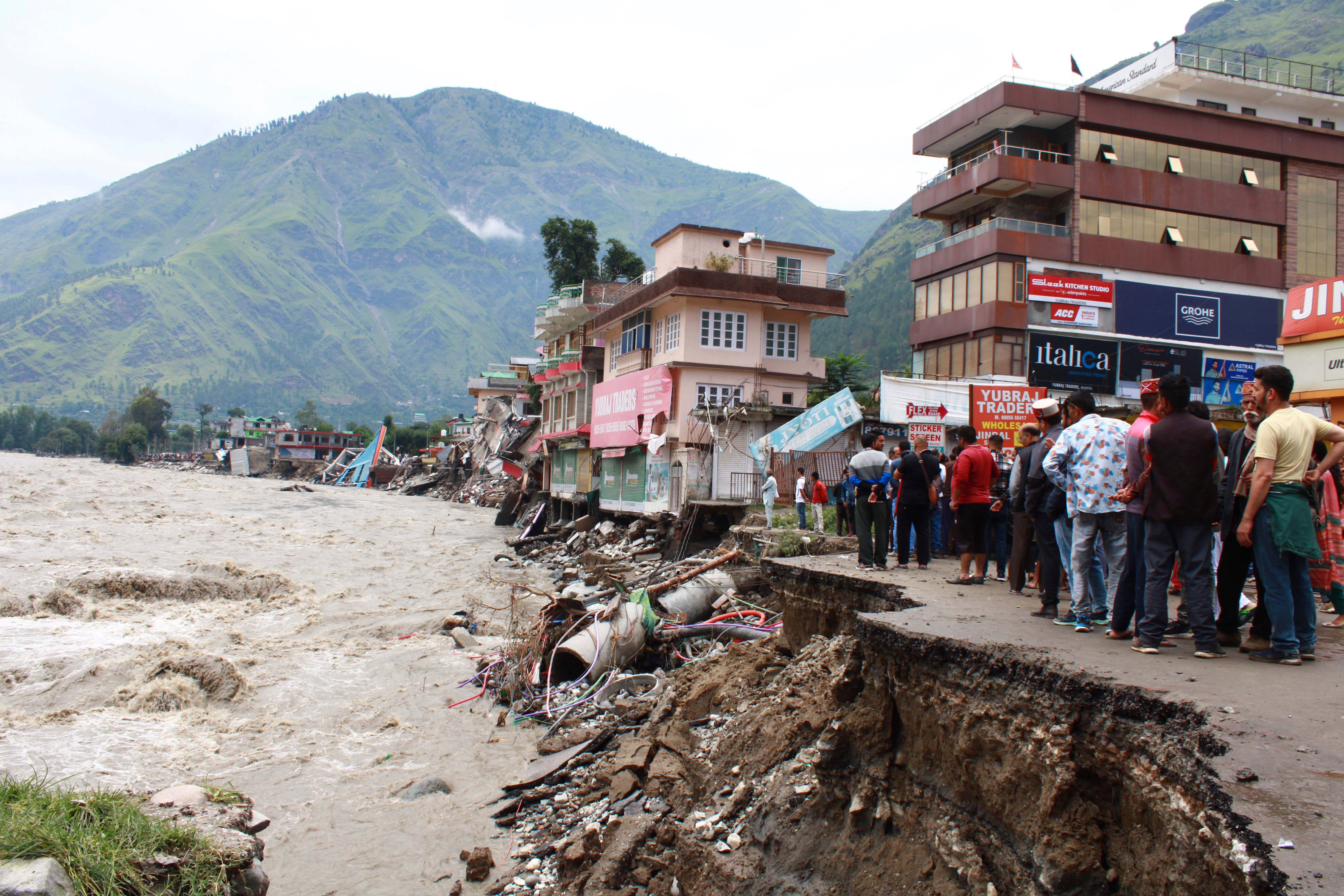Record monsoon rains have killed more than 100 people in northern India this week
Officials say that record monsoon rains have killed more than 100 people in northern India this week

Schools and colleges were closed after record monsoon rains led to massive waterlogging, road caves-in, collapsed homes and gridlocked traffic in large parts of northern India this week, killing more than 100 people, officials said Thursday.
At least 88 people died and more than 100 were injured in the worst hit-mountainous Himachal Pradesh state where cars, buses, bridges and houses were swept away by swirling flood waters, a state government statement said. The region is nearly 500 kilometers (310 miles) north of New Delhi.
Twelve people have died of rain-related incidents since Wednesday in Uttar Pradesh state, said Shishir Singh, a state government spokesman.
Nine of them drowned, two died after being struck by lightning and one was killed by a snake bite, Singh said.
One person died in New Delhi and four were killed in the Indian-controlled section of Kashmir, officials said.
Authorities used helicopters to rescue nearly 300 people, mostly tourists, who were stranded in the Chandertal area in Himachal Pradesh state since Saturday. They included seven sick people who were airlifted on Tuesday, the government said.
Nearly 170 houses have collapsed and another 600 were partially damaged by heavy rains and landslides in the state, the state emergency operation center said.
In New Delhi, residential areas close to the Jamuna River were flooded, submerging roads, cars and homes, leading to the evacuation of thousands of people from low-lying areas.
Dozens of cars were blocked by sheets of water, throwing the movement of vehicles into disarray during the morning rush hour in New Delhi on Thursday.
The water level of the Jamuna River flowing through the Indian capital topped a 40-year record and reached 207.71 meters (681.5 feet) on Wednesday evening, according to a statement by the office of New Delhi’s top elected official, Arvind Kejriwal.
Authorities have moved nearly 30,000 people to relief camps and also converted some schools into relief camps in the badly hit areas, the statement said. Hundreds of people with their livestock also have taken shelter under overhead road bridges in the eastern parts of the Indian capital.
Rajesh Singh, a factory owner, was stuck with his motorbike for hours with floodwater blocking both sides of the road near the river bank. “I have never seen anything like this in the past 22 years.”
“New Delhi hasn’t seen a lot of rain in the past two days, but the river level has risen due to abnormally high levels of water discharge from Hathni Kund barrage in neighboring Haryana state,” Kejriwal said.
India’s weather agency has forecast more heavy rains in northern parts in the coming days. It said monsoon rains across the country have already brought about 2% more rainfall than normal.
India regularly witnesses severe floods during the monsoon season, which runs between June and September and brings most of South Asia’s annual rainfall. The rains are crucial for rain-fed crops planted during the season but often cause extensive damage.
Scientists say monsoons are becoming more erratic because of climate change and global warming, leading to frequent landslides and flash floods in India’s Himalayan north.
Bookmark popover
Removed from bookmarks